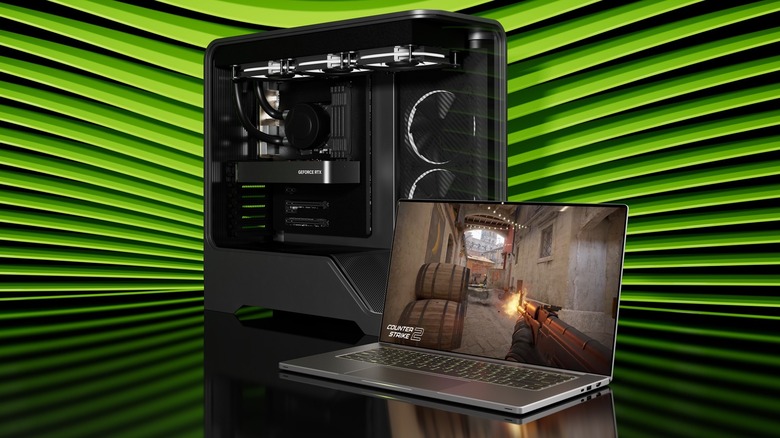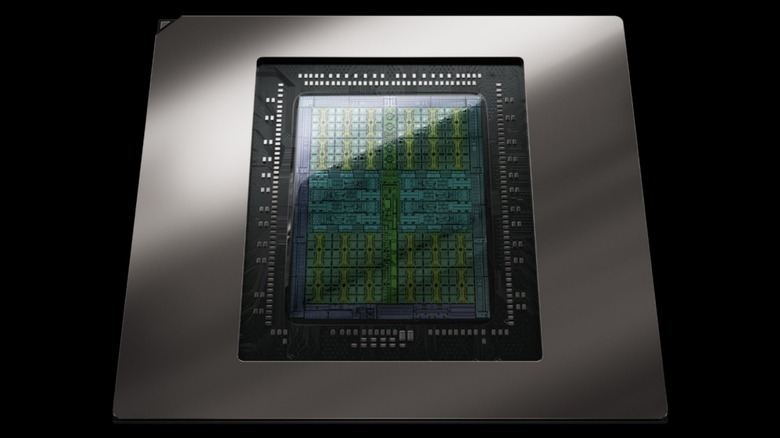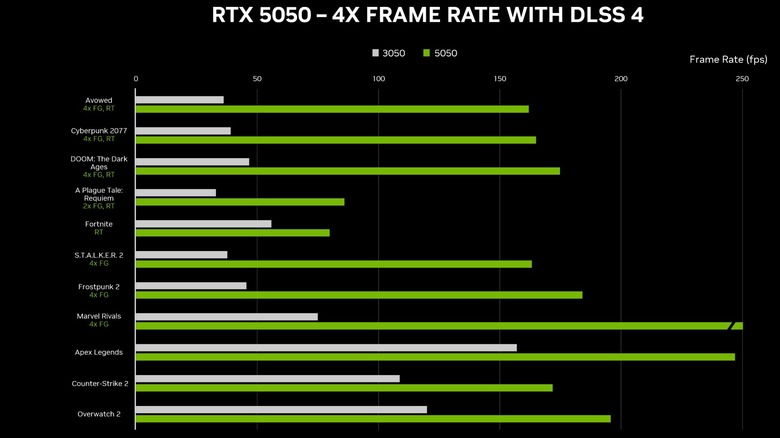Who Is The Nvidia RTX 5050 Really Supposed To Be For?
Nvidia rounded off its RTX 5000-series graphics card lineup recently with the introduction of the entry-level GeForce RTX 5050 GPU for desktops and laptops. It's the least powerful and most affordable member of Nvidia's next-gen GPU solutions, but there are a few aspects that make it worthy of consideration, especially for folks who are targeting a low-cost graphics solution that can handle AAA games at 1080p resolution up to a medium graphics tier.
The biggest draw of this card is support for Nvidia's in-house Deep Learning Super Sampling (DLSS 4) tech that essentially lifts the gameplay quality by enhancing the FPS count, cutting down on latency, and boosting the image output. It comes equipped with the company's fourth-gen ray-tracing cores, Reflex 2 support to improve in-game responsiveness and 5th-gen Tensor cores. The latest from Nvidia goes for $249, down $50 compared to the GeForce RTX 4060 and the same as the GeForce RTX 3050.
Going by the on-paper specs, the GeForce RTX 5050 offers nearly double the GeForce RTX 4060's AI output and ranks six times higher compared to the GeForce RTX 3050. The memory situation has, expectedly, remained unchanged at 8GB, but the bandwidth gets a boost. Before you decide to splurge on this one, there are a few aspects you must keep in mind, especially if you are upgrading from a previous-gen graphics card. Nvidia is pushing it as a successor to the GeForce RTX 3050, with DLSS 4 as the biggest selling point. So, just what magnitude of performance leap are we looking at?
The fine line
Based on internal gaming performance tests released by Nvidia, we are looking at nearly 2x or 3x gain in FPS count in AAA titles. In "Cyberpunk 2077" at 1080p and DLSS 4 enabled, the performance climbs from under 50 FPS to nearly 150 FPS. The uplift is even bigger for the mobile/laptop version, where you get a meaningful jump over the RTX 4060. Keep in mind that not all games will benefit universally from the DLSS4 enhancements, or to the same extent as Nvidia has advertised.
As of March 2025, just over 100 titles support DLSS4. Moreover, when it comes to neutral in-game performance without enabling DLSS 4, the generation-over-generation gains will diminish further. Now, the chipmaker has not revealed official benchmark figures that could paint a realistic picture of the gains offered by the GeForce RTX 5050 GPU.
RTX 5050 Test Result from Inno3Dhttps://t.co/rgddTtA9j4 pic.twitter.com/5x5VbTQBT6
— 포시포시 (@harukaze5719) July 1, 2025
Thankfully, one of Nvidia's OC partners, Inno3D, has shared benchmark numbers against the GeForce RTX 3050 and the GeForce RTX 4060 graphics cards. Let's just say things don't look particularly bright for the GeForce RTX 5050. It is barely ahead of the GeForce RTX 4060 on various 3DMark tests, and even lags in two Time Spy runs and Speed Way tests. The "natural" gaming prowess of Nvidia's latest entry-point GPU can only be tested in titles that don't take advantage of the built-in upscaling technologies. And that situation doesn't paint a particularly good picture of this GPU.
Should you get it?
As per game benchmarks shared by Inno3D, when Nvidia's latest was tested at 1080p resolution and "High" image quality preset, it performed lower than the GeForce RTX 4060 GPU, and only slightly above the GeForce RTX 3050. There are a few other aspects worth keeping in mind. The GeForce RTX 5050 is the only Nvidia graphics card from the Blackwell architecture that is still served with the older GDDR6 memory, while the rest of the RTX 5000 series has shifted to the faster GDDR7 memory.
The situation is weird because the mobile version of the same GPU ships with the GDDR7 module. The situation gets even tougher for the RTX 5050 when it is compared to the RTX 5060 and AMD's RX 9060 XT graphics cards. For a mere $50 lift in the asking price, the RTX 5060 offers faster GDDR7 memory, 40% more CUDA cores, 37% higher Tensor AI cores, and 36% more ray-tracing cores. When compared against the AMD RX 9060XT, the gulf becomes even wider, as the AMD card even beats the GeForce RTX 5060 and can humble the weaker GeForce RTX 5050.
And let's not forget that Intel's Arc B50 outperforms the mid-tier cards, such as AMD's RX 7060XT and Nvidia's RTX 4060, which is seen outgunning the fresher RTX 5050 in Inno3D's tests. In a nutshell, unless you can't score an RTX 4060 or one of AMD's RX 9000 series GPUs at their MSRP, and are averse to investing in an Intel GPU, the RTX 5050 is the one you should go for.


